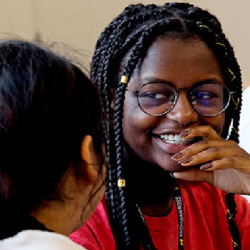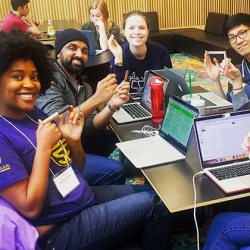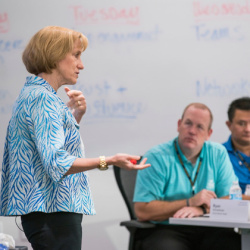Michigan Ross-Based Reflected Best Self Exercise Still Proving Its Worth, Expanding Its Reach

A self-evaluation tool developed at the Ross School of Business has lately been gaining considerable acceptance and validation from the business education community.
The Reflected Best Self Exercise was developed about 20 years ago at the Center for Positive Organizations to help people develop their full potential by truly understanding their strengths and making the most of them.
Professors Gretchen Spreitzer, Bob Quinn, Jane Dutton, and Laura Morgan Roberts developed the tool, which remains unique in a few different ways:
- It focuses only on the user’s strengths, rather than also addressing perceived weaknesses, which tend to draw more attention.
- It encourages feedback from people outside of the user’s work life.
- It uses feedback that is more narrative-based and open ended rather than numerical scales.
“The main purpose of it is to help people see through the eyes of others who they are when they're at their very best,” Spreitzer said in a recent interview. “We take people through a process where they look for themes and strengths in their data. Then, we pull those things together into a best self-portrait that they can use as a reminder to themselves.”
Although many users of the exercise come from the world of work, business students benefit as well. Michigan Ross uses the tool in many degree programs and in executive education. It has also been adopted by other top schools including Harvard Business School.
Over the years, several Michigan Ross-based studies have examined the value of the tool, but outside researchers with no connection to Ross have also studied its effectiveness. Most recently, a study in the journal Academy of Management Learning and Education found that the exercise improves performance of business students in job interviews — an application that had not previously been studied.
Other recent studies of the exercise include:
- “Seeing Oneself as a Valued Contributor: Social Worth Affirmation Improves Team Information Sharing”
- “Endure and Innovate: Effects of Reflected Best Self Exercise on Resilience and Creativity”
“Other tools compare you to other people, but this tool compares your normal self to who you are when you're operating at your very best,” Spreitzer said. “A lot of times when we think about people's potential, we think about what is possible, but in this case, we're actually drawing on actual experiences.”







